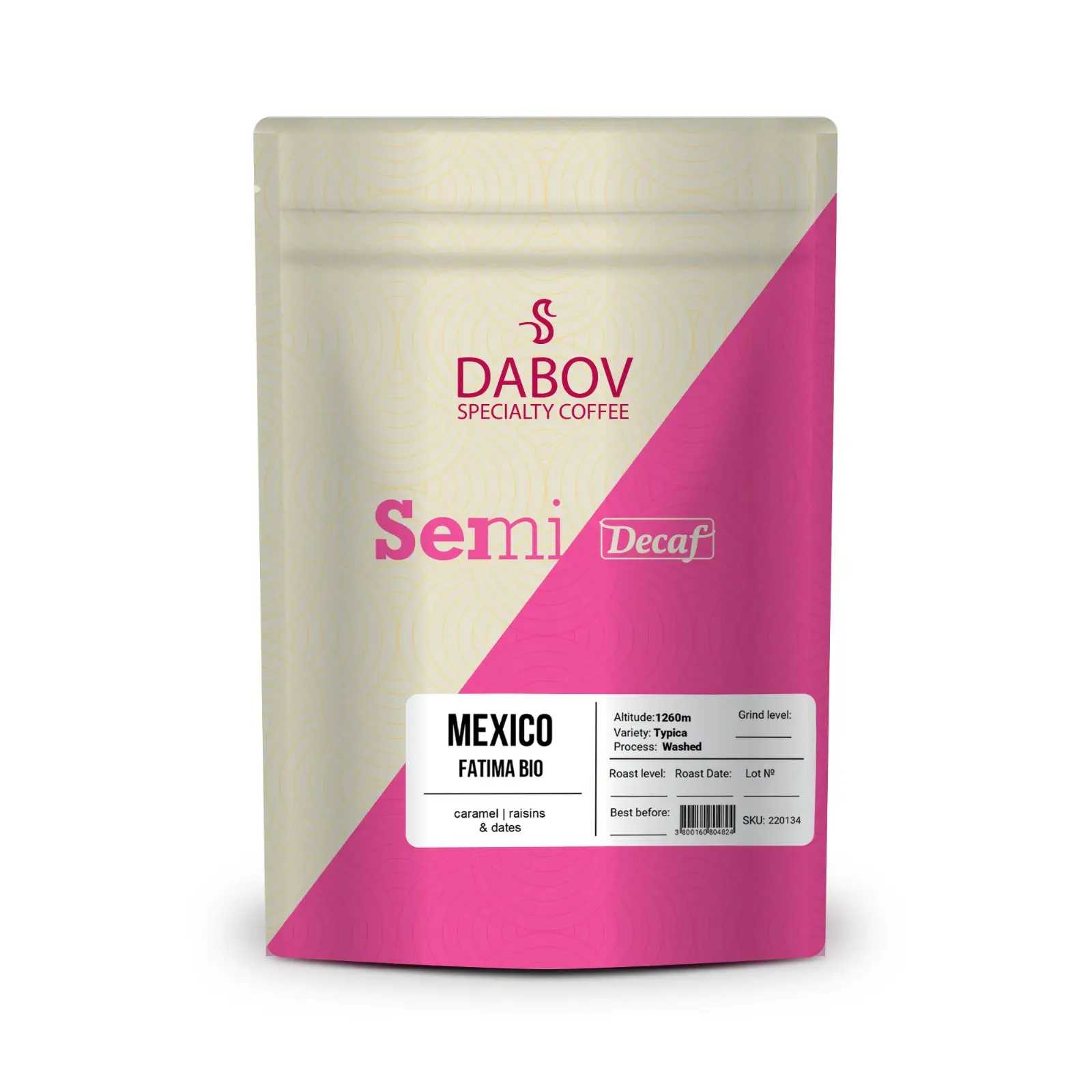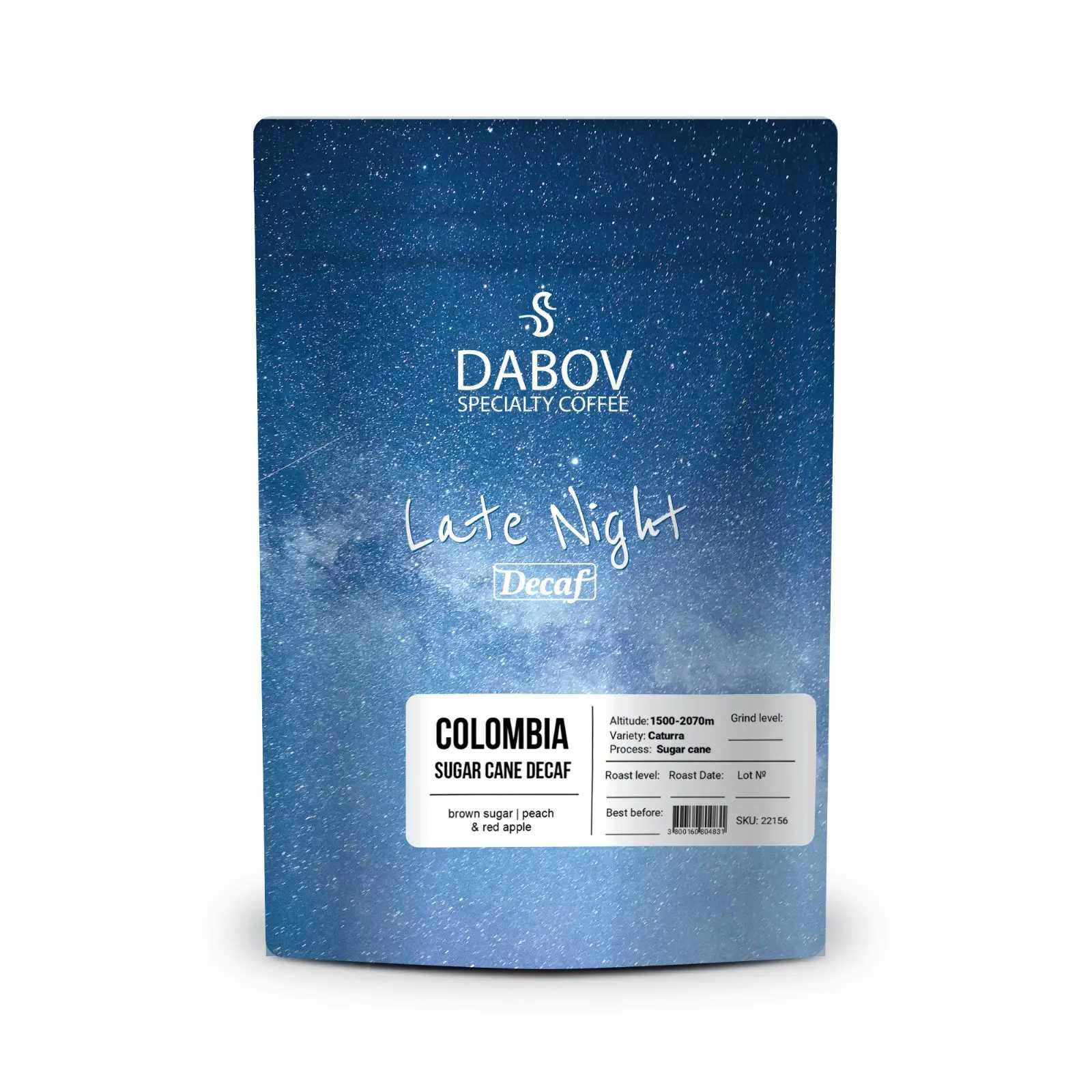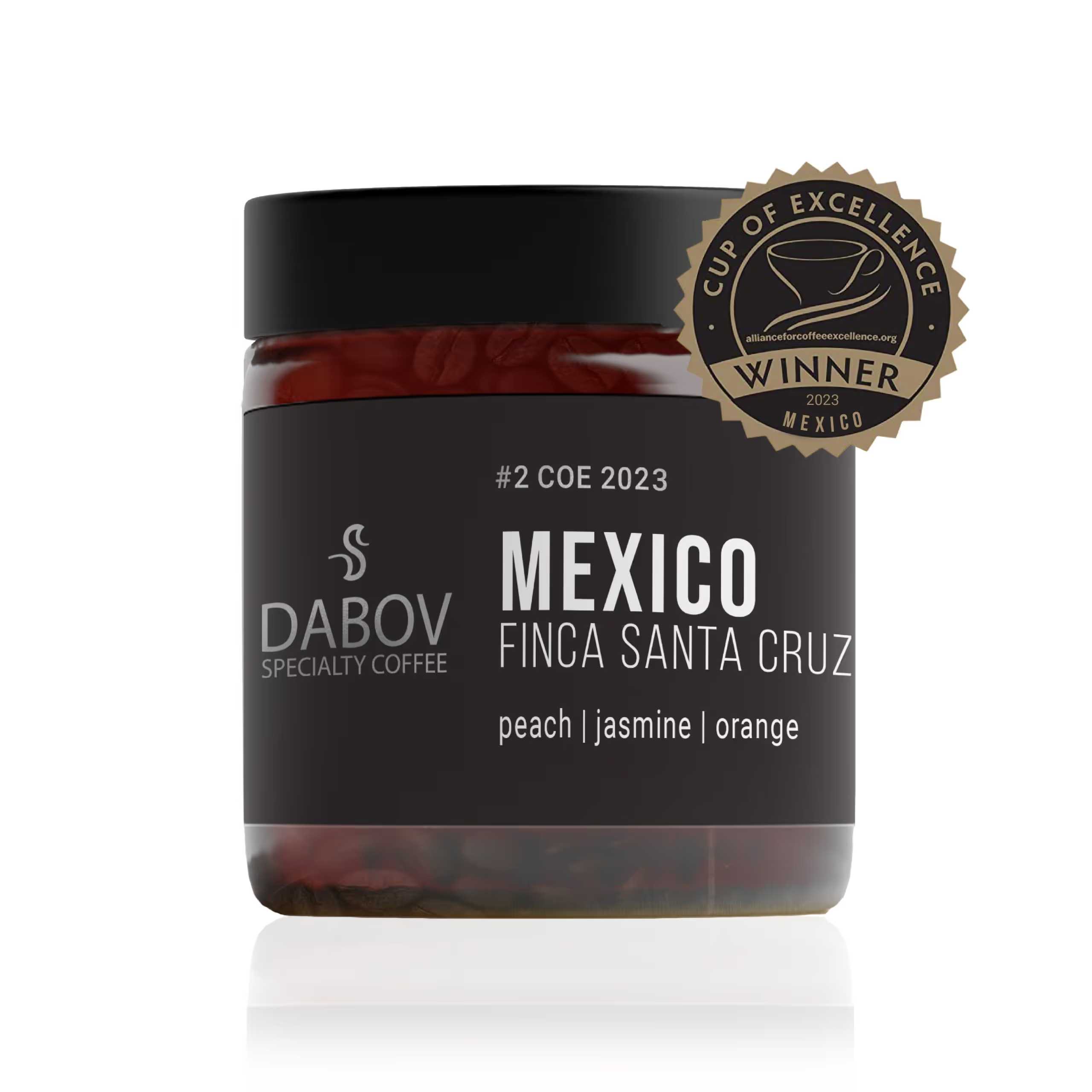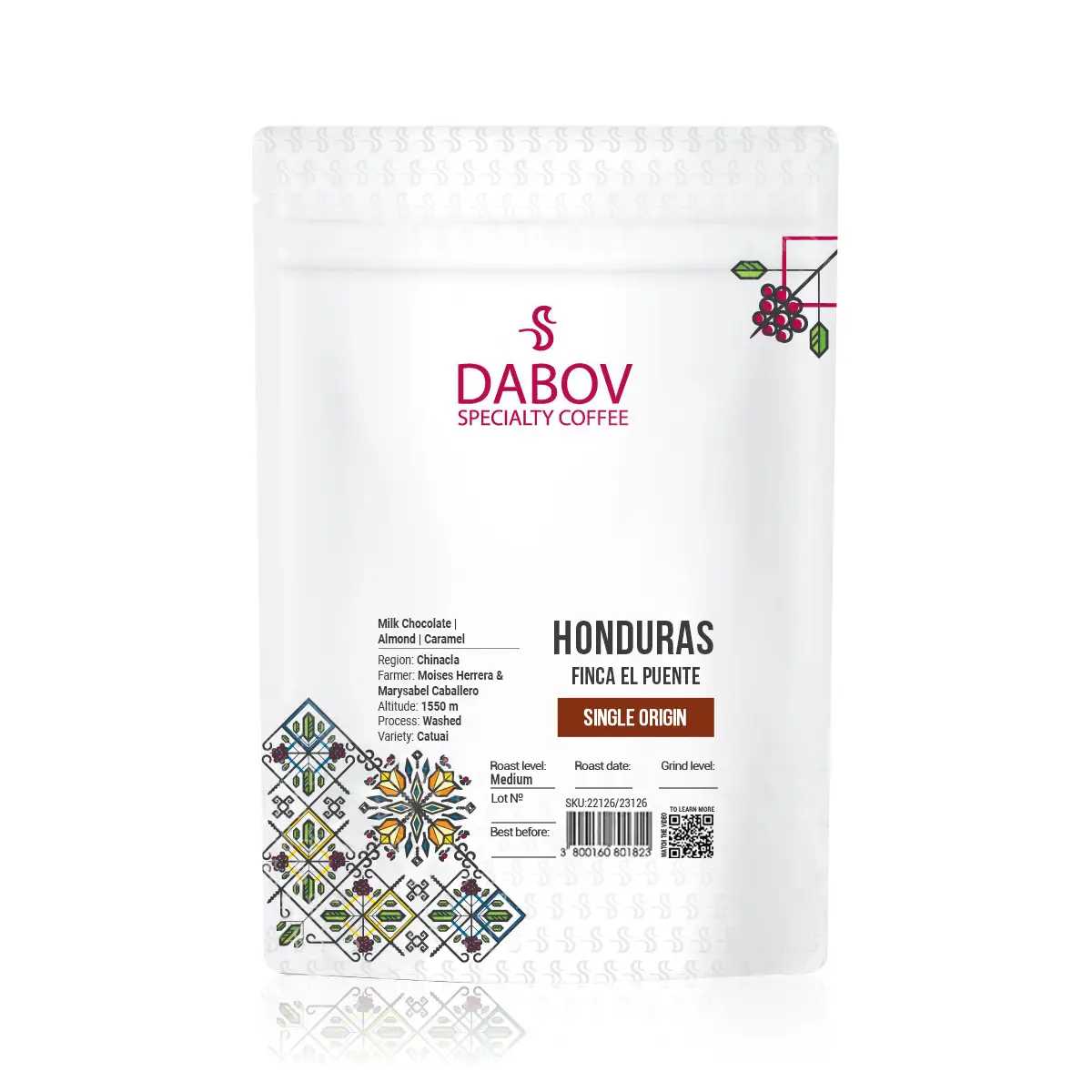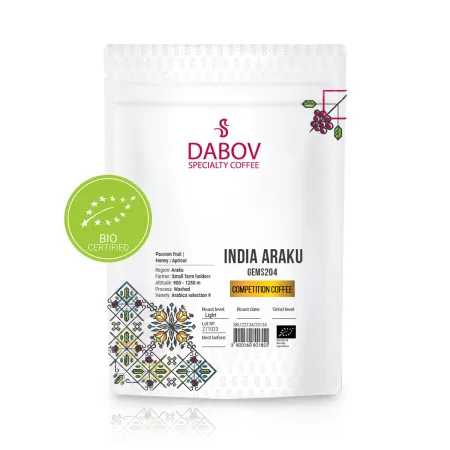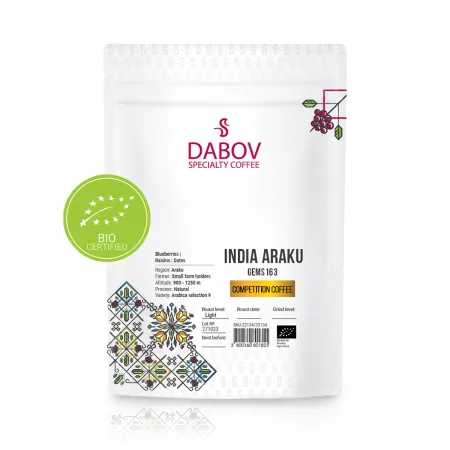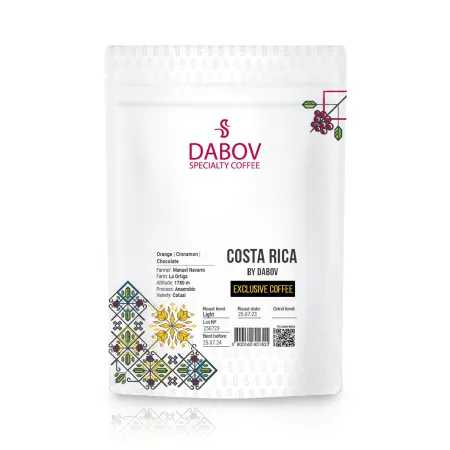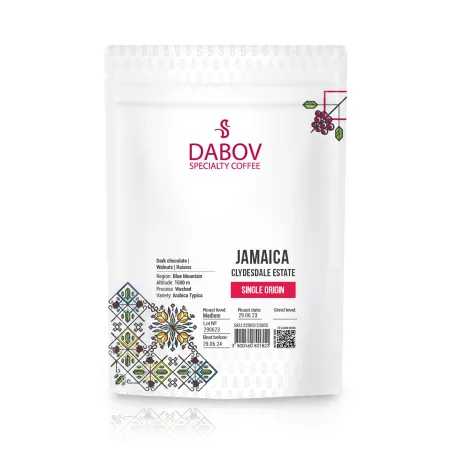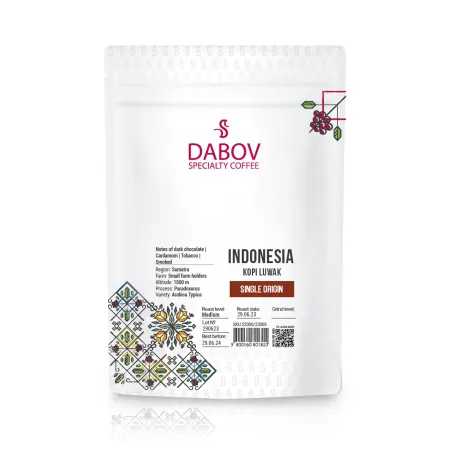Thailand's Coffee Culture Growing Popularity and Flavors
Thailand's coffee culture has blossomed from niche to notable, showcasing unique local flavors and traditions. This article dives into the history of coffee's introduction through foreign influences and its rise in local popularity, particularly among younger generations. The journey of Thai coffee, greatly influenced by the country's diverse climate and rich agricultural heritage, unravels the specialty coffee movement found in urban cafes today. From traditional preparation methods to innovative flavors infused with local ingredients, coffee from Thailand offers something special. As social media propels coffee culture into the limelight, the allure of coffee tourism invites locals and travelers alike to experience the heart of Thailand's coffee scene. Join us as we explore this aromatic journey and delve into the future trends and sustainable practices shaping Thai coffee. Whether you're a seasoned coffee lover or new to the brew, there's much to discover in Thailand's vibrant coffee landscape.
Introduction
Thailand, a country renowned for its vibrant street food scene and aromatic cuisine, has been quietly brewing a revolution in its coffee culture. Over the past few decades, the Kingdom has transformed from a land primarily associated with tea and traditional beverages to a burgeoning hub of coffee enthusiasm. This metamorphosis has not only changed the way Thais start their day but has also created a rich tapestry of flavors that are uniquely Thai. The emergence of coffee culture in Thailand is a fascinating journey that intertwines historical influences, agricultural innovation, and a modern appetite for specialty brews.
As we delve into the world of Thai coffee, we'll explore how this once-niche market has blossomed into a significant cultural phenomenon. From the misty mountains of the north to the bustling streets of Bangkok, coffee has woven itself into the fabric of Thai society, creating new traditions and experiences along the way. This article will take you on a sensory journey through Thailand's coffee landscape, examining its historical roots, unique flavors, and the factors driving its growing popularity. Whether you're a coffee aficionado or simply curious about global coffee trends, the story of Thailand's coffee culture is sure to captivate and perhaps even inspire your next brew.
Section 1: The Rise of Thailand's Coffee Culture
1.1 Historical Background
The story of coffee in Thailand begins in the late 19th century, a tale intertwined with the country's complex history of foreign relations and agricultural development. It was during this period that foreign missionaries and traders, primarily from Europe and America, introduced coffee to the Kingdom of Siam (as Thailand was then known). These early coffee pioneers brought with them not just the beans but also the knowledge of cultivation and preparation.
Initially, coffee was viewed with curiosity and skepticism by the Thai people, who had long-established tea-drinking traditions. The bitter taste of coffee was unfamiliar to Thai palates accustomed to the subtle flavors of green tea and herbal infusions. However, as Western influences grew in the royal court and among the elite, coffee slowly began to gain a foothold in Thai society. The first coffee plantations were established in the cooler climates of Northern Thailand, particularly in the mountainous regions of Chiang Mai and Chiang Rai.
The integration of coffee into Thai culture was a gradual process, influenced by changing social dynamics and economic factors. As Thailand modernized in the early 20th century, coffee became increasingly associated with progress and sophistication. Coffee shops, initially catering to expatriates and the upper classes, began to appear in Bangkok and other major cities. These establishments served as meeting places for intellectuals, artists, and businesspeople, fostering a new urban culture centered around coffee consumption.
The post-World War II era saw a significant shift in Thailand's coffee landscape. As part of efforts to eradicate opium cultivation in the northern highlands, the Thai government, in collaboration with international agencies, promoted coffee as an alternative crop for hill tribe communities. This initiative not only expanded coffee production but also laid the foundation for Thailand's unique coffee varieties and flavors, influenced by the diverse microclimates and traditional farming practices of these regions.
By the late 20th century, coffee had become an integral part of Thai daily life, with local adaptations emerging. The traditional 'Oliang' – a strong, sweet iced coffee – became a popular street beverage, bridging the gap between Western coffee culture and Thai tastes. This period also saw the rise of instant coffee, which made the drink more accessible to a broader segment of the population, further cementing coffee's place in Thai society.
The historical journey of coffee in Thailand is a testament to the country's ability to adapt and integrate foreign influences while maintaining its unique cultural identity. From a foreign curiosity to a beloved daily ritual, coffee's evolution in Thailand set the stage for the vibrant and diverse coffee culture we see today.
1.2 The Influence of Local Agricultural Practices
Thailand's diverse climate and fertile soil have played a crucial role in shaping its coffee industry. The country's geography, ranging from tropical coastlines to cool mountainous regions, provides a variety of microclimates ideal for coffee cultivation. This diversity has allowed Thailand to produce a wide range of coffee varieties, each with its unique flavor profile influenced by local terroir.
Northern Thailand, particularly the regions around Chiang Mai, Chiang Rai, and Mae Hong Son, has emerged as the epicenter of Thai coffee production. These areas, with their high altitudes (ranging from 800 to 1,500 meters above sea level), cooler temperatures, and well-draining soil, provide optimal conditions for growing high-quality Arabica coffee. The seasonal temperature variations in these regions contribute to the slow maturation of coffee cherries, resulting in beans with complex flavor profiles.
The agricultural practices in these regions have been significantly influenced by the hill tribe communities who have inhabited these areas for generations. These communities, including the Akha, Lisu, and Karen tribes, have integrated coffee cultivation into their traditional farming methods. Their approach often includes shade-grown coffee, where the coffee plants are interspersed with other crops and native trees. This practice not only provides natural protection for the coffee plants but also contributes to biodiversity conservation and soil health.
In recent years, there has been a growing emphasis on sustainable and organic farming practices in Thai coffee production. Many farmers have adopted methods such as composting, natural pest control, and water conservation techniques. These practices not only improve the quality of the coffee but also align with the increasing global demand for sustainably produced coffee.
The influence of local agricultural practices extends beyond cultivation methods to post-harvest processing. Thai coffee farmers have developed unique processing techniques that contribute to the distinct flavors of their coffee. For instance, some producers in Northern Thailand have experimented with extended fermentation periods, resulting in coffee with fruity and complex flavor notes. Others have incorporated local herbs and spices into the drying process, infusing the beans with subtle aromatic qualities.
The Thai government and various agricultural organizations have played a significant role in supporting and developing the coffee industry. Initiatives such as the Royal Project Foundation, established by the late King Bhumibol Adulyadej, have provided technical support, research, and market access to coffee farmers, particularly in the northern regions. These efforts have not only improved the quality of Thai coffee but have also helped in preserving traditional farming communities and promoting sustainable development.
The influence of local agricultural practices on Thai coffee is a prime example of how traditional knowledge and modern techniques can be harmoniously blended to create a unique product. As Thai coffee continues to gain recognition in the global market, these local practices remain at the heart of what makes Thai coffee special, ensuring that each cup tells a story of the land and people who cultivated it.
1.3 The Specialty Coffee Movement
The emergence of the specialty coffee movement in Thailand marks a significant turning point in the country's coffee culture. This movement, which began to gain momentum in the early 2000s, has transformed the way Thais perceive, consume, and appreciate coffee. It has led to a proliferation of specialty coffee shops across urban areas, particularly in Bangkok, Chiang Mai, and other major cities, each contributing to the rich tapestry of Thailand's evolving coffee scene.
The specialty coffee movement in Thailand is characterized by its focus on quality, traceability, and the unique flavor profiles of single-origin coffees. Unlike the traditional coffee shops that dominated the market in previous decades, these new establishments prioritize the sourcing of high-quality beans, often directly from Thai farmers or renowned international producers. This shift has not only improved the overall quality of coffee available to Thai consumers but has also fostered a deeper appreciation for the craft of coffee making.
One of the pioneers in Thailand's specialty coffee scene is Roots Coffee, founded in Bangkok in 2013. Roots Coffee has played a crucial role in educating Thai consumers about specialty coffee and promoting locally grown beans. Their approach, which combines rigorous quality control with innovative brewing methods, has set a benchmark for other specialty coffee shops in the country.
Another significant player in the Thai specialty coffee market is Akha Ama Coffee. Founded by an Akha tribesman, this social enterprise not only produces high-quality coffee but also works to improve the lives of coffee-growing communities in Northern Thailand. Akha Ama's success story has inspired many other small-scale producers to enter the specialty coffee market, contributing to the diversity of Thai coffee offerings.
The rise of specialty coffee shops has been accompanied by an increased interest in coffee education among Thai consumers and professionals alike. Barista training programs, coffee cupping sessions, and latte art competitions have become commonplace, fostering a community of coffee enthusiasts and professionals. This growing knowledge base has led to a more discerning customer base, pushing coffee shops to continually innovate and improve their offerings.
International coffee chains have also played a role in shaping Thailand's specialty coffee landscape. While Starbucks entered the Thai market in 1998 and helped familiarize Thai consumers with Western-style coffee drinks, local chains like Cafe Amazon (owned by the state oil company PTT) have successfully adapted the coffee shop concept to Thai tastes and preferences. Cafe Amazon, with its distinctive green branding, has become ubiquitous across Thailand, often found at PTT gas stations, and has even expanded internationally.
The specialty coffee movement has also given rise to a new generation of Thai coffee roasters. Companies like Pacamara Coffee Roasters and Brave Roasters have gained recognition for their expertly roasted beans and commitment to showcasing the unique qualities of Thai-grown coffee. These roasters often work closely with farmers, encouraging sustainable practices and experimenting with processing methods to create distinctive flavor profiles.
As the specialty coffee movement continues to evolve, it's not just about the coffee itself but also about the experience. Many specialty coffee shops in Thailand have become destinations in their own right, known for their Instagram-worthy interiors, innovative food menus, and community-focused events. This holistic approach to coffee culture has helped to cement specialty coffee's place in Thai urban life.
The growth of the specialty coffee movement in Thailand represents more than just a change in consumer preferences; it signifies a broader cultural shift towards quality, sustainability, and local pride. As Thai coffee continues to gain recognition on the global stage, the specialty coffee movement remains at the forefront, driving innovation and excellence in the Thai coffee industry.
Section 2: Key Characteristics of Thai Coffee
2.1 Unique Coffee Varieties
Thailand's coffee landscape is characterized by a diverse range of coffee varieties, each contributing to the country's unique coffee profile. The two main species cultivated in Thailand are Arabica and Robusta, with Arabica dominating the specialty coffee market due to its superior flavor characteristics.
Arabica coffee in Thailand is primarily grown in the northern regions, where the high altitudes and cooler climates provide ideal growing conditions. The most common Arabica varieties found in Thailand include Typica, Bourbon, and Caturra. These varieties are known for their complex flavor profiles, often featuring notes of fruit, florals, and chocolate.
One of the most celebrated Thai Arabica varieties is the Chiang Mai Peaberry. Peaberry coffee, which occurs when the coffee cherry produces a single, round bean instead of the usual two flat-sided beans, is prized for its concentrated flavor. The Chiang Mai Peaberry is known for its bright acidity, full body, and notes of citrus and dark chocolate.
Another unique Thai Arabica variety is the Doi Chaang coffee, grown in the Doi Chang village in Chiang Rai province. This coffee has gained international recognition for its exceptional quality and distinct flavor profile, which includes notes of nuts, dark chocolate, and a hint of spice. The success of Doi Chaang coffee has not only put Thai coffee on the global map but has also significantly improved the livelihoods of the local farming community.
While Arabica dominates the specialty market, Robusta coffee plays a significant role in Thailand's coffee industry, particularly in the southern regions. Thai Robusta, often overlooked in discussions of specialty coffee, has been gaining attention in recent years for its unique qualities. When properly cultivated and processed, Thai Robusta can exhibit a smooth, full-bodied flavor with notes of dark chocolate and nuts, challenging the stereotype of Robusta as merely a harsh, bitter coffee.
One of the most interesting developments in Thai coffee varieties is the emergence of hybrid and experimental cultivars. For instance, the Catimor variety, a cross between Arabica and Robusta, has been introduced in some regions to combine the disease resistance of Robusta with the superior flavor of Arabica. These experimental varieties are part of ongoing efforts to develop coffee plants that can thrive in Thailand's diverse climates while producing high-quality beans.
The flavor profiles of Thai coffee varieties are further influenced by processing methods. While washed processing is common, many Thai producers are experimenting with natural and honey processing methods. These alternative processing techniques can enhance the inherent flavors of the beans, resulting in coffees with more pronounced fruity or sweet notes.
It's worth noting that the unique characteristics of Thai coffee varieties are not solely due to genetics but are also a result of terroir – the environmental factors that affect a crop's phenotype, including geography, geology, and climate. The diverse microclimates of Thailand's coffee-growing regions contribute to the wide range of flavor profiles found in Thai coffee.
As Thai coffee continues to gain recognition in the global specialty coffee market, there is an increasing focus on preserving and promoting indigenous coffee varieties. This includes efforts to identify and cultivate wild coffee species found in Thailand's forests, which could potentially lead to the discovery of new flavor profiles and contribute to the genetic diversity of coffee plants worldwide.
The variety of coffee types available in Thailand reflects the country's diverse agricultural landscape and the innovative spirit of its coffee producers. From the celebrated Arabicas of the north to the robust flavors of southern Robustas, Thai coffee offers a rich palette of flavors that continue to surprise and delight coffee enthusiasts around the world.
2.2 Traditional Coffee Preparation
The art of coffee preparation in Thailand is a fascinating blend of traditional methods and modern techniques, reflecting the country's rich cultural heritage and its openness to global influences. One of the most iconic and enduring methods of coffee preparation in Thailand is the use of the "tungdtom" or Thai coffee sock filter.
The tungdtom is a simple yet effective brewing device consisting of a muslin bag attached to a metal ring with a handle. This method of brewing has been used in Thailand for generations and is still widely employed in street stalls and traditional coffee shops across the country. The process involves adding coarsely ground coffee to the sock filter, which is then steeped in hot water. The resulting brew is strong, full-bodied, and often served over ice with a generous helping of sweetened condensed milk, creating the beloved Thai iced coffee known as "Oliang."
The preparation of Oliang is an art in itself. Traditional recipes often include a blend of coffee, corn, soybeans, and sesame seeds, which are roasted together to create a unique flavor profile. This blend is then ground and brewed using the tungdtom. The addition of sweetened condensed milk not only balances the strong, bitter notes of the coffee but also adds a creamy texture that has become synonymous with Thai iced coffee.
Another traditional method of coffee preparation in Thailand involves the use of a "moka pot" or stovetop espresso maker. While not indigenous to Thailand, this method has been adopted and adapted by many Thai households. The moka pot produces a strong, espresso-like coffee that forms the base for many Thai coffee drinks, including the popular "Kafae Boran" or ancient coffee.
Kafae Boran is a traditional Thai coffee that showcases the country's love for strong, sweet coffee drinks. The preparation involves brewing a strong coffee using either a moka pot or tungdtom, then adding sugar while the coffee is still hot, allowing it to caramelize slightly. The result is a rich, sweet coffee with complex caramel notes, often served over ice.
In recent years, there has been a resurgence of interest in these traditional preparation methods among specialty coffee shops in Thailand. Many establishments now offer modern interpretations of Oliang and Kafae Boran, using high-quality, single-origin beans and precise brewing techniques to elevate these classic drinks.
The influence of global coffee trends has also led to the adoption of various other brewing methods in Thailand. Pour-over techniques, such as the V60 and Chemex, have gained popularity in specialty coffee shops, allowing baristas to highlight the unique flavor profiles of Thai single-origin coffees. Espresso-based drinks, prepared using modern espresso machines, have also become staples in urban coffee shops, often featuring local twists such as the use of coconut sugar or pandan syrup.
Cold brew coffee has seen a surge in popularity in Thailand, particularly in the hot summer months. Many coffee shops now offer their own versions of cold brew, often infused with local ingredients like lemongrass or butterfly pea flower to create uniquely Thai flavor combinations.
Despite the influx of modern brewing methods, the traditional tungdtom remains a beloved tool in Thai coffee culture. Its simplicity and effectiveness in extracting rich, full-bodied flavors make it a favorite among street vendors and home brewers alike. The continued use of this traditional method alongside modern techniques is a testament to Thailand's ability to honor its coffee heritage while embracing innovation.
The diverse methods of coffee preparation in Thailand reflect the country's dynamic coffee culture. From the street-side Oliang to the meticulously prepared pour-overs in high-end cafes, each method contributes to the rich tapestry of flavors and experiences that define Thai coffee. These preparation techniques not only influence the flavor of the coffee but also play a crucial role in preserving and evolving Thailand's unique coffee traditions.
2.3 Infusion of Local Flavors
One of the most captivating aspects of Thailand's coffee culture is the creative infusion of local flavors into coffee drinks. This fusion of traditional Thai ingredients with coffee has resulted in a unique array of beverages that tantalize the taste buds and showcase the country's rich culinary heritage. The incorporation of local flavors not only sets Thai coffee apart on the global stage but also reflects the innovative spirit of Thai baristas and coffee enthusiasts.
A prime example of this flavor infusion is the use of pandan in coffee drinks. Pandan, a fragrant leaf commonly used in Southeast Asian cuisine, imparts a subtle, sweet aroma reminiscent of vanilla with grassy notes. In coffee preparations, pandan syrup or essence is often added to lattes or iced coffee drinks, creating a distinctively Thai flavor profile. The "Pandan Latte" has become a popular menu item in many Thai cafes, offering a unique twist on the classic latte that appeals to both locals and tourists alike.
Another local ingredient that has found its way into Thai coffee concoctions is coconut. Thailand's abundance of coconuts has led to their widespread use in cuisine, and coffee is no exception. Coconut milk is often used as a dairy alternative in coffee drinks, providing a creamy texture and subtle tropical flavor. Some innovative cafes have taken this a step further by infusing coffee with coconut water or adding coconut flesh to create textured beverages. The "Coconut Coffee Smoothie" is a refreshing drink that has gained popularity, especially in tourist areas, combining the rich flavors of Thai coffee with the cooling properties of coconut.
Lemongrass, a staple in Thai cooking, has also made its way into the coffee scene. Its citrusy, slightly sweet flavor complements the bitterness of coffee, creating a refreshing and aromatic beverage. Lemongrass-infused cold brew has become a trendy offering in many specialty coffee shops, particularly during the hot summer months. This combination not only tastes delightful but also offers potential health benefits, as lemongrass is known for its digestive and anti-inflammatory properties.
The use of local fruits in coffee drinks is another area where Thai creativity shines. Mango, a beloved fruit in Thailand, is often incorporated into coffee-based smoothies or used as a flavoring in iced lattes. The "Mango Coffee Frappe" is a popular summer drink that combines the sweetness of ripe mangoes with the boldness of coffee. Similarly, passion fruit, with its tart and tropical flavor, has been used to create unique coffee cocktails and iced beverages that capture the essence of Thailand's tropical climate.
Spices play a significant role in Thai cuisine, and their integration into coffee drinks has resulted in some intriguing flavor combinations. Cardamom, traditionally used in Thai iced tea, has found its way into coffee preparations, adding a warm, aromatic quality to espresso-based drinks. Some cafes offer a "Thai Spice Latte," which might include a blend of cardamom, cinnamon, and star anise, creating a complex and warming beverage reminiscent of Thai desserts.
The trend of incorporating local flavors extends beyond just adding ingredients to coffee. Some innovative cafes have begun experimenting with coffee-based versions of traditional Thai desserts. For instance, the classic Thai dessert "Khanom Mo Kaeng" (custard pudding) has been reimagined as a coffee-flavored dessert, combining the silky texture of the pudding with the rich flavor of Thai coffee.
It's not just the flavors that are being infused, but also the presentation. Many Thai cafes are now serving coffee drinks in traditional Thai vessels or incorporating elements of Thai art and culture into their presentation. For example, butterfly pea flower, known for its vibrant blue color, is sometimes used to create visually striking layered iced coffee drinks that change color when stirred.
The infusion of local flavors into Thai coffee drinks is more than just a culinary trend; it's a reflection of Thailand's ability to blend tradition with innovation. These unique flavor combinations not only appeal to local tastes but also offer international visitors a truly Thai coffee experience. As the Thai coffee scene continues to evolve, we can expect to see even more creative uses of local ingredients, further cementing Thailand's place as a destination for unique and flavorful coffee experiences.
Section 3: Popularity Surge of Coffee in Thailand
3.1 Growing Domestic Consumption
The surge in coffee consumption within Thailand over the past two decades has been nothing short of remarkable. This growth is not just a reflection of changing tastes but also indicative of broader social and economic shifts within the country. Understanding this trend requires a deep dive into the statistics, consumer behavior, and the factors driving this coffee revolution, particularly among the younger generations.
According to recent market research, Thailand's domestic coffee consumption has been growing at an annual rate of 5-6% over the past several years. This growth outpaces many other countries in the region and reflects a significant shift in beverage preferences among Thai consumers. In 2020, despite the global pandemic, Thailand's coffee market was valued at approximately 35 billion baht (about 1.1 billion USD), with projections suggesting continued growth in the coming years.
One of the most striking aspects of this trend is the changing demographics of coffee consumers in Thailand. Traditionally, coffee consumption was more common among older adults and in certain professional settings. However, recent years have seen a dramatic shift, with young adults and even teenagers becoming avid coffee drinkers. This shift is particularly evident in urban areas, where coffee shops have become popular hangout spots for students and young professionals.
The reasons behind this surge in popularity among younger Thais are multifaceted. Firstly, there's the influence of Western culture and the perception of coffee as a trendy, sophisticated beverage. Many young Thais view coffee consumption as part of a modern, cosmopolitan lifestyle. This perception has been reinforced by the proliferation of stylish coffee shops and the integration of coffee culture into social media trends.
Secondly, the rise of coffee consumption aligns with changes in work and study culture in Thailand. Long working hours and intense study schedules have made coffee an essential part of daily life for many young Thais. Coffee is seen not just as a beverage but as a productivity tool, helping students and professionals stay alert and focused.
The variety of coffee options available has also contributed to its growing popularity. From traditional Thai iced coffee to artisanal pour-overs, the range of choices caters to diverse tastes and preferences. This variety has made coffee accessible to a broader audience, including those who might not have enjoyed traditional strong, black coffee.
Health consciousness has played a role in coffee's popularity as well. As awareness of the potential health benefits of moderate coffee consumption has grown, many Thais have incorporated coffee into their daily routines as part of a healthy lifestyle. This trend has been particularly noticeable in the rise of sugar-free and plant-based milk options in coffee shops across the country.
The economic aspect of this trend is significant. The growth in coffee consumption has led to the expansion of both local and international coffee chains across Thailand. Cafe Amazon, a homegrown brand, has become one of the largest coffee chains in the country, with thousands of outlets nationwide. This expansion has created job opportunities and contributed to the growth of the service sector in the Thai economy.
Moreover, the increasing domestic demand for coffee has had a positive impact on Thailand's coffee farming industry. With more Thais developing a taste for high-quality, locally grown coffee, there has been renewed interest and investment in coffee production in regions like Chiang Mai and Chiang Rai. This has not only boosted the agricultural sector but has also helped in preserving traditional farming communities.
The trend of growing coffee consumption in Thailand shows no signs of slowing down. As the coffee culture continues to evolve, we can expect to see further innovations in products and services catering to the diverse preferences of Thai coffee drinkers. From ready-to-drink canned coffees for on-the-go consumption to high-end specialty coffee experiences, the Thai coffee market is likely to become even more diverse and dynamic in the coming years.
This surge in popularity is more than just a passing trend; it represents a fundamental shift in Thai consumer culture. Coffee has become deeply integrated into daily life, social interactions, and work culture in Thailand. As this trend continues, it will be fascinating to observe how it shapes not only beverage preferences but also social norms and economic patterns in Thai society.
3.2 Influence of Social Media
The rise of social media has played a pivotal role in the explosive growth of Thailand's coffee culture. Platforms like Instagram, Facebook, and more recently, TikTok, have become powerful tools for promoting and shaping coffee trends, creating a vibrant online community of coffee enthusiasts, and transforming the way Thais experience and share their coffee moments. This digital revolution has not only boosted the popularity of coffee but has also significantly influenced consumer behavior and marketing strategies within the Thai coffee industry.
Instagram, in particular, has been at the forefront of this social media-driven coffee boom. The visually-oriented platform is perfectly suited for showcasing the aesthetic appeal of coffee drinks, cafe interiors, and the overall coffee experience. Thai coffee shops and roasters have leveraged this platform to create stunning visual content that not only promotes their products but also creates a sense of aspiration and lifestyle around coffee consumption.
The phenomenon of "Instagrammable" cafes has taken Thailand by storm. These are coffee shops designed with social media in mind, featuring unique decor, artfully presented drinks, and photogenic corners that encourage customers to share their experiences online. This trend has led to a proliferation of visually striking cafes across Thailand, each vying for attention on social media feeds. For instance, the "Hands and Heart Cafe" in Bangkok gained fame for its distinctive hand-shaped chairs and heart-shaped latte art, becoming a must-visit spot for coffee lovers and Instagram enthusiasts alike.
Influencer marketing has become a crucial component of the Thai coffee scene. Social media influencers, ranging from celebrities to micro-influencers with niche followings, have significant sway over coffee trends and consumer preferences. These influencers often collaborate with coffee shops and brands, creating content that showcases new products, unique coffee experiences, or hidden gem cafes. Their endorsements can lead to overnight success for coffee businesses, with followers eager to try the latest trending drink or visit the most talked-about cafe.
The impact of social media extends beyond just promotion; it has created a new form of coffee connoisseurship. Many Thai coffee enthusiasts use platforms like Instagram to document their coffee journeys, sharing tasting notes, brewing techniques, and discoveries of new beans or cafes. This has fostered a community of passionate coffee lovers who engage in discussions, share knowledge, and organize meet-ups, further fueling the growth of coffee culture in Thailand.
TikTok, with its short-form video format, has introduced a new dimension to coffee content creation in Thailand. Baristas and coffee shop owners use the platform to showcase their skills, share quick recipes, and create entertaining content around coffee preparation. Viral TikTok trends often lead to the creation of new coffee drinks or the resurgence of traditional preparations, influencing menu offerings across the country.
The social media-driven coffee culture has also led to the rise of coffee-related events and festivals in Thailand. These events, heavily promoted on social media, bring together coffee enthusiasts, baristas, roasters, and industry professionals. The Thailand Coffee Fest, for example, has become one of the largest coffee events in Southeast Asia, attracting thousands of visitors and generating significant buzz on social media platforms.
For coffee businesses in Thailand, having a strong social media presence has become almost as important as the quality of their coffee. Many cafes now have dedicated social media managers or invest in professional photography to ensure their online presence is as appealing as their physical space. This focus on digital marketing has allowed even small, independent coffee shops to compete with larger chains by building loyal online followings.
The influence of social media on Thailand's coffee culture goes beyond mere aesthetics. It has created a more informed and discerning consumer base. Coffee drinkers in Thailand are now more likely to seek out information about coffee origins, brewing methods, and flavor profiles, all readily available through social media channels. This increased knowledge has, in turn, pushed coffee shops and roasters to elevate their offerings and provide more transparent information about their products.
However, the social media-driven coffee trend is not without its critics. Some argue that the focus on visual appeal and "Instagrammability" can sometimes overshadow the importance of coffee quality and taste. There are concerns that some cafes prioritize style over substance, creating visually striking but mediocre coffee experiences.
Despite these concerns, the overall impact of social media on Thailand's coffee culture has been overwhelmingly positive. It has democratized coffee appreciation, making information and trends accessible to a wide audience. It has provided a platform for small businesses and local roasters to gain recognition, and it has fostered a sense of community among coffee lovers across the country.
As social media continues to evolve, so too will its influence on Thailand's coffee scene. The integration of new technologies like augmented reality and virtual reality may offer new ways to experience and share coffee moments. Whatever the future holds, it's clear that social media will continue to play a crucial role in shaping the vibrant and dynamic world of Thai coffee culture.
3.3 Coffee Tourism
Coffee tourism has emerged as a significant trend in Thailand, blending the country's rich agricultural heritage with its booming tourism industry. This niche form of tourism has not only contributed to the growing popularity of Thai coffee but has also provided economic opportunities for coffee-growing regions and helped preserve traditional farming practices. The rise of coffee tourism in Thailand is a multifaceted phenomenon that encompasses farm visits, coffee festivals, and specialized coffee tours, offering visitors unique insights into the world of Thai coffee production and culture.
One of the primary attractions of coffee tourism in Thailand is the opportunity to visit coffee farms, particularly in the northern regions of Chiang Mai, Chiang Rai, and Mae Hong Son. These areas, known for their picturesque landscapes and cool climates, offer visitors a chance to experience the entire coffee production process firsthand. Many farms have developed visitor programs that include guided tours of the coffee plantations, demonstrations of harvesting and processing techniques, and of course, coffee tasting sessions.
The Doi Chaang Coffee Original farm in Chiang Rai is a prime example of successful coffee tourism. This farm, run by members of the Akha hill tribe, has gained international recognition for its high-quality Arabica coffee. Visitors to Doi Chaang can tour the coffee fields, learn about sustainable farming practices, and participate in coffee cupping sessions. The farm's success story, which includes fair trade practices and community development initiatives, adds an educational and ethical dimension to the tourism experience.
Another notable destination is the Doi Tung Development Project in Chiang Rai. Initiated by the Thai royal family to provide alternative livelihoods for former opium farmers, this project includes extensive coffee plantations. Visitors can tour the coffee fields, learn about the project's social impact, and enjoy panoramic views of the surrounding mountains. The combination of coffee education, cultural exchange, and stunning scenery makes Doi Tung a popular stop on many coffee tourism itineraries.
Coffee festivals have become major events in Thailand's tourism calendar, attracting both domestic and international visitors. The Thailand Coffee Fest, held annually in Bangkok, is the largest such event, featuring hundreds of exhibitors, coffee competitions, and workshops. These festivals not only showcase the diversity of Thai coffee but also serve as platforms for cultural exchange and business networking within the coffee industry.
Specialized coffee tours have gained popularity, offering curated experiences for coffee enthusiasts. These tours often combine visits to multiple coffee farms, roasteries, and cafes, providing a comprehensive overview of Thailand's coffee landscape. Some tours focus on specific aspects of coffee production, such as organic farming methods or unique processing techniques, catering to visitors with specific interests.
The integration of coffee experiences into broader tourism offerings has also contributed to the growth of coffee tourism. Many hotels and resorts, particularly in coffee-growing regions, now offer coffee-themed packages. These might include guided tastings, barista classes, or excursions to nearby coffee farms. Some establishments have even developed their own coffee blends, sourced from local farms, providing guests with a unique souvenir of their stay.
The rise of "third wave" coffee culture in Thailand has led to the emergence of coffee-focused city tours, particularly in Bangkok and Chiang Mai. These tours take visitors to specialty coffee shops, micro-roasteries, and coffee labs, offering insights into urban coffee culture and the latest trends in coffee preparation and consumption.
Coffee tourism has had a significant positive impact on local communities in coffee-growing regions. It has provided additional income streams for farmers, created job opportunities in rural areas, and helped to preserve traditional farming practices. Many coffee farms involved in tourism have implemented sustainable and eco-friendly practices, recognizing the value that environmentally conscious tourists place on such initiatives.
The educational aspect of coffee tourism has played a crucial role in raising awareness about Thai coffee both domestically and internationally. Visitors often leave with a deeper appreciation for the complexity of coffee production and the unique qualities of Thai coffee. This increased awareness has contributed to the growing demand for Thai coffee in international markets.
However, the growth of coffee tourism also presents challenges. There's a need to balance tourism development with environmental conservation and the preservation of local cultures. Some communities have implemented measures to ensure sustainable tourism practices, such as limiting visitor numbers or investing tourism revenues in community development projects.
Looking to the future, coffee tourism in Thailand is likely to continue evolving. There's potential for the development of more immersive experiences, such as long-term stays on coffee farms or participatory programs where visitors can be involved in various stages of coffee production. The integration of technology, such as augmented reality tours or virtual tastings, could also enhance the coffee tourism experience.
Coffee tourism represents a unique intersection of agriculture, culture, and hospitality in Thailand. It has not only contributed to the popularity of Thai coffee but has also created a new avenue for cultural exchange and sustainable tourism. As Thailand's coffee industry continues to grow and evolve, coffee tourism is likely to play an increasingly important role in showcasing the country's rich coffee heritage to the world.
Section 4: Regional Coffee Flavors in Thailand
4.1 Northern Thailand
Northern Thailand, with its mountainous terrain and cool climate, has established itself as the epicenter of the country's coffee production, particularly for high-quality Arabica varieties. This region, encompassing provinces like Chiang Mai, Chiang Rai, and Mae Hong Son, is home to some of Thailand's most distinctive and celebrated coffees. The unique characteristics of Northern Thai coffees are a result of the region's geography, climate, and the traditional farming practices of local hill tribes.
The coffee-growing areas in Northern Thailand typically range from 800 to 1,500 meters above sea level. This altitude, combined with the region's seasonal temperature variations, creates ideal conditions for slow-ripening coffee cherries, resulting in beans with complex flavor profiles. The soil in these mountainous areas is often rich in minerals, contributing



